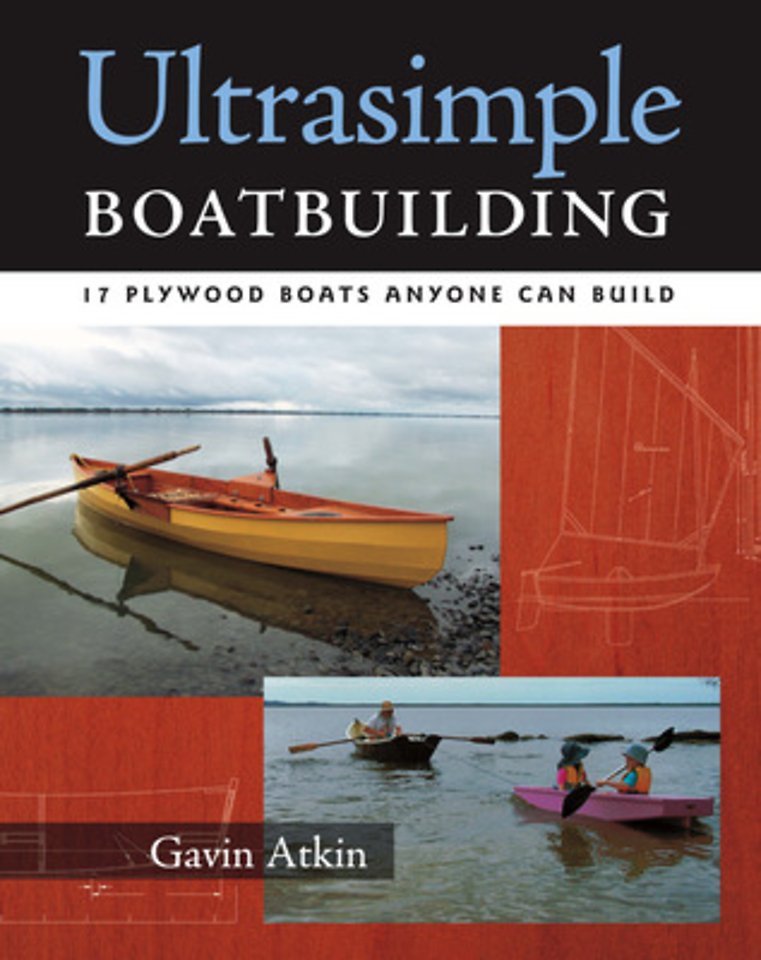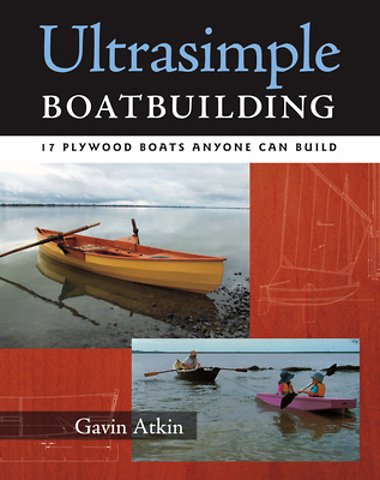Contents<h3> Introduction: The Virtues of Small and Simple Boats</h3><h2> Part 1How We'll Build Them</h2><h3>1.Three Simple Ways to Build Ultrasimple Boats </h3><h4>The Simplified Chine Log Method</h4><h4>Stitch-and-Glue</h4><h5>Polyurethane Stitch and Glue</h5><h5>Epoxy Stitch and Glue</h5><h4>Your Choice</h4><h3>2.Materials and Tools</h3><h4>Plywood</h4><h5>Buying Plywood</h5><h4>Lumber</h4><h5>Buying Lumber</h5><h4>Adhesives</h4><h5>Epoxy</h5><h5>Polyurethane Glues</h5><h4>Paint and Varnish</h4><h4>Tools</h4><h3>3.Basic Skills</h3><h4>Working with Lumber</h4><h5>Marking</h5><h5>Cutting</h5><h5>Working with Saws</h5><h5>Joining Lengths of Lumber</h5><h4>Working with Plywood panels</h4><h5>Marking out using coordinates</h5><h5>Cutting the panels</h5><h5>Making Butt Joints</h5><h4>Using Fasteners</h4><h5>Pre-drilling holes </h5><h5>Working with hand drills</h5><h5>Using hammers and driving nails</h5><h5>Using screwdrivers and driving screws(sidebar: Working with Chisels) </h5><h4>Working with Glues</h4><h5>Using polyurethane glue(sidebar: PL Hints from Bryant Owen)</h5><h5>Using Epoxy</h5><h3>4.Building the Hull</h3><h4>Building with the Simplified Chine Log Method</h4><h5>Cleats for bulkheads and frames</h5> <h5>Cleats for the transoms</h5><h5>Assembling the Bulkheads, Transoms, and Sides</h5><h5>Adding Chine logs</h5><h4>Building Stitch-and-Glue Style</h4><h5>Bulkheads and Frames</h5> <h5>Initial Assembly </h5><h5>Taping versus "Stitching"</h5><h5>Making Fillets with polyurethane</h5><h5>Making Fillets with epoxy</h5><h5>Covering the hull</h5><h4>Adding a Skeg</h4><h4>Inwales, gunwales, breasthooks and quarter knees(sidebar: Home Made Clamps)</h4><h3>5.Finishing Your Boat</h3><h4>Painting</h4><h5>Painting with water-based paint</h5><h5>Painting with oil-based paint</h5><h4>Varnishing</h4><h3>6.Fitting out and Rigging</h3><h4>Fittings</h4><h4>Paddling and rowing gear(sidebar: A Rowing Rant)</h4><h4>Sailing Gear</h4><h5>Daggerboards, leeboards, and rudders</h5><h5>Spars</h5><h5>Sails</h5><h5>Rigging(sidebar: Knots)</h5><h4>Preventing rot</h4><h3>7.Model making</h3><h2>Part 2Let's Build Some Boats</h2><h3>8.Minimouse and Micromouse: two tiny, flat-bottom double-paddle prams</h3><h4>Hull</h4><h4>Decks</h4><h4>Seats</h4><h4>Les Brown's Micromouse</h4><h3>9.Lilypad: a stone-simple punt</h3><h3>10.Mouse and Rowing Mouse: a V-bottomed messabout pram for double-paddle or oars</h3><h3>11.Cruising Mouse: a two-person rowing or paddling pram with carrying capacity</h3><h3>12.PoorBoy: a small outboard skiff</h3><h3>13.Dogsbody: a larger outboard boat</h3><h3>14.Jiggity: an "ultrasimplified" Auray punt</h3><h3>15.Aurette: a small sailing Auray punt </h3><h3>16.Piragua: a pirogue</h3><h3>17.Cinderella: a double-paddle canoe with a "roundish" bottom</h3><h3>18.Flying Mouse: a child's sailing pramString Sailing</h3><h3>19.Eek!: a larger, sportier sailing pram for more experienced kids and small adults</h3><h3>20.Puddle Duck Racer: the world's simplest racing class?</h3><h3>21.Summer Breeze: a versatile rowing/sailing skiff</h3><h4>Using the Simplified Chine Log Method</h4><h5>Stem and transom</h5><h5>Frame</h5><h5>Assembling the Sides</h5><h5>Installing the Bottom</h5><h4>Using stitch and glue</h4><h4>Finishing the Hull</h4><h4>Rowing Accoutrements</h4><h4>Sailing Rig</h4><h3>22.Doris the Dory: a rowing and sailing expedition boat</h3><h2> Part 3: What Shall We Build Next?</h2><h3>23.A gallery of appealing designs</h3><h4>Phil Bolger</h4><h5>Teal</h5><h5>His 'n' Hers Schooners</h5><h5>Micro</h5><h4>Jim Michalak<h5>AF3</h5><h5>AF4</h5><h5>Ladybug</h5><h5>Harmonica</h5><h4>Murray Isles</h4><h5>Swallowdale 15</h5><h5>Swan Bay</h5><h5>Pepper Gal</h5><h4>John Welsford</h4><h5>Houdini</h5><h5>Tread Lightly</h5><h5>Trover</h5><h4>Jacques Mertens-Goosens</h4><h5>CK 17</h5><h5>Otter 16</h5><h5>Indian River Skiff<h4>Conrad Natzio</h4><h5>Sandpiper</h5><h5>Oystercatcher</h5>

